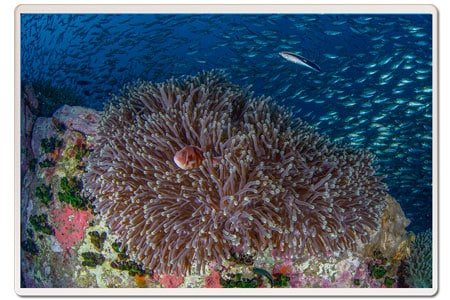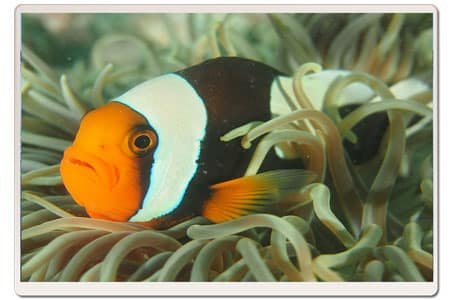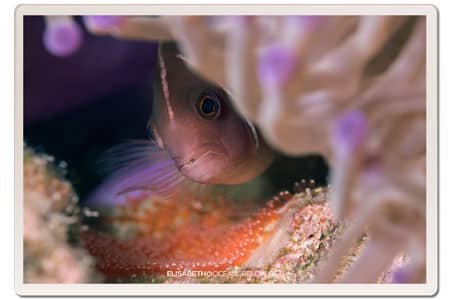A short story about Anemone Fish on Koh Tao
OK, so we didn’t find Nemo specifically, but lots of his cousins! The ‘Nemo’ from the movie is actually an Ocellaris Clown Fish, one of 28 different species of Anemone Fish. They belong to the Pomacentridae family of fish, which also include Damsel Fish.

A Symbiotic Relationship
As the name suggests, anemone fish live inside anemones, and in doing so, play their part in one of the best known examples of symbiosis in the marine environment. It is a mutualistic relationship where both the fish and the anemone derive benefits. The anemone fish feeds on leftover fish and algae from the anemone, and is provided with protection from predators. The anemone receives a cleaning service, as well as improved water circulation from the anemone fish swimming around within it.
The colour and patterning of anemone fish varies between species, but most have white stripes of some variety – hence why they are often called Clown Fish. Most anemone fish will live in one particular type of anemone. Did you know there are over 1100 types worldwide? However only a small percentage of anemone species are known to host anemone fish. Here on Koh Tao, we tend to see Pink Anemone Fish most often, but Saddleback Anemone Fish and Clark’s Anemone Fish can also be spotted if you explore that sandy areas away from the main reef.

Family Hierarchies
Anemone fish have a very distinct hierarchy within their anemone grouping. Only 2 of the fish will reproduce – the dominant male and the dominant female. But here’s the twist…all anemone fish are born male, and some (normally the existing dominant male) will sex change later in life to become the dominant female when the existing dominant female dies or becomes removed from the anemone. This allows one of the other fish to move up the hierarchy into the position of dominant male. They didn’t tell you that in the Disney movie huh?! Probably not a suitable story line for children we suppose, although it does perhaps explain why Nemo’s dad wanted to find him so badly! 😉
Anemone fish reproduce by laying eggs, normally just outside but in close proximity to the anemone – sometimes even underneath it. The dominant female will lay anything from 100 to 1000 eggs, which the dominant male will fertilise. The male then does most of the care taking, including eating any eggs that are damaged or infertile. The eggs normally hatch 6-10 days after being laid, and the larvae then drift in the water for another 10 days or so. At this point they are transparent, but soon start to develop the colouring and pattern of their species. The juveniles then spend their time on the bottom of the reef searching for a host anemone. And thus the cycle begins again.

Want to know more about marine life? Why not sign up for your PADI AWARE Fish Identification or PADI Underwater Naturalist specialty course? And if you want to capture some images of these beauties, then the PADI Digital Underwater Photographer course is for you. Be warned though, they are speedy to move around and dart in and out of their host anemone, so capturing good shots of them takes time and patience!
